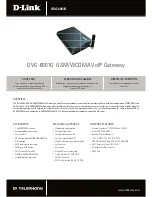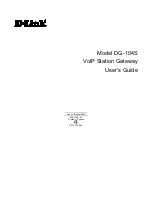
Real Time Automation, Inc.
43
1-800-249-1612
ASCII Configuration
– ASCII Concatenating
The ASCII Concatenating feature allows you to combine multiple data points and locations, in the mating
protocol, into a single ASCII string. Click the
ASCII Concatenating (Optional)
button at the bottom of the
ASCII Configuration page to access the ASCII Concatenating Configuration page for this device.
1)
Number of Fields:
This indicates how many values will be concatenated together to form a
single ASCII message (up to 50 values per message).
2)
Concatenating Delimiter:
This adds a delimiter between data fields in the ASCII string. If a
delimiter should not appear between each of the fields, select UNUSED.
3)
Data Type:
Select the data type of the parsed value.
a.
Signed and Unsigned 8/16/32/64 Bit Integers
b.
32/64 Bit Floating Points
c.
String
–
in order to use, a String data type must be selected in the other protocol.
Cannot concatenate an Integer to a String.
d.
Constant String
4)
Internal Tag Name/Constant Name:
a.
If Data Type other than Constant String is selected, then this will be the name to
reference this tag within the gateway. This value is used on the display page and the
mapping page.
b.
If Data Type Constant String is selected, then this is the string value that will send.
5)
Data Format:
a.
%d
–
used for Signed Integers
b.
%u
–
used for Unsigned Integers
c.
%lf
–
used for Floating Points with no set decimal precision
d.
%.1lf…%.6lf –
used for Floating Points to show the offset of the decimal point value
















































